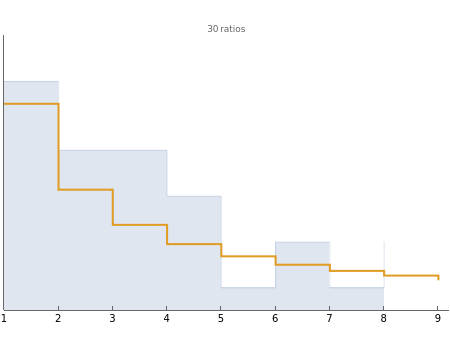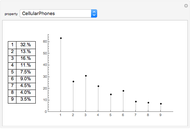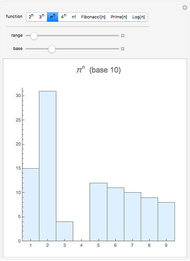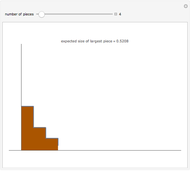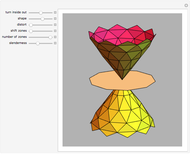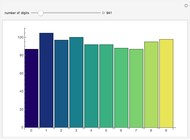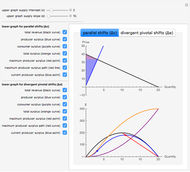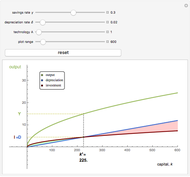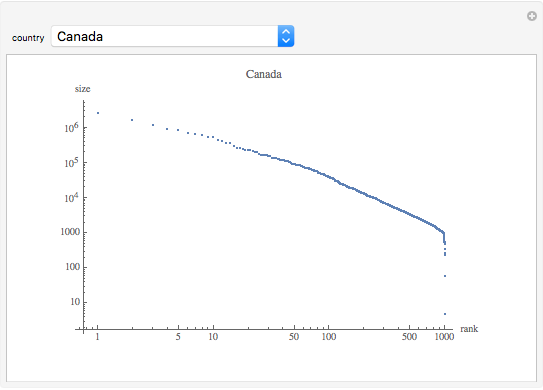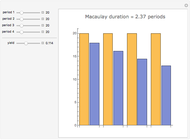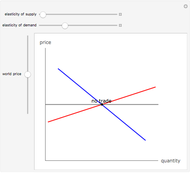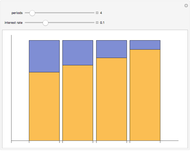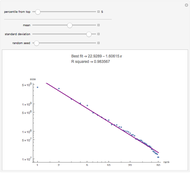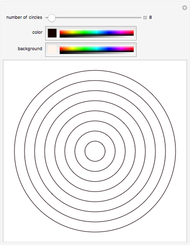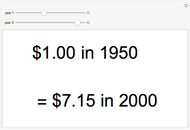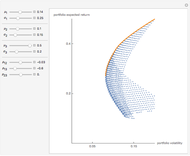Benford's Law from Ratios of Random Numbers

Requires a Wolfram Notebook System
Interact on desktop, mobile and cloud with the free Wolfram Player or other Wolfram Language products.
Simon Newcomb believed that the empirical regularity later known as Benford's Law arises because the data exhibiting the law are ratios of random quantities. A computer experiment can be set up to test Newcomb's hypothesis. Ratios are formed using numbers randomly drawn from a random segment of the unit interval. The distribution of the leading digits of the ratios is represented by the blue line. The purple line represents Benford's Law.
Contributed by: Fiona Maclachlan (March 2011)
Open content licensed under CC BY-NC-SA
Snapshots
Details
The ratios are formed using numbers drawn from a random segment of the unit interval. Drawing from a fixed interval results in a distribution of leading digits given by  , where s is the value of the leading digit.
, where s is the value of the leading digit.
Permanent Citation
"Benford's Law from Ratios of Random Numbers"
http://demonstrations.wolfram.com/BenfordsLawFromRatiosOfRandomNumbers/
Wolfram Demonstrations Project
Published: March 7 2011
